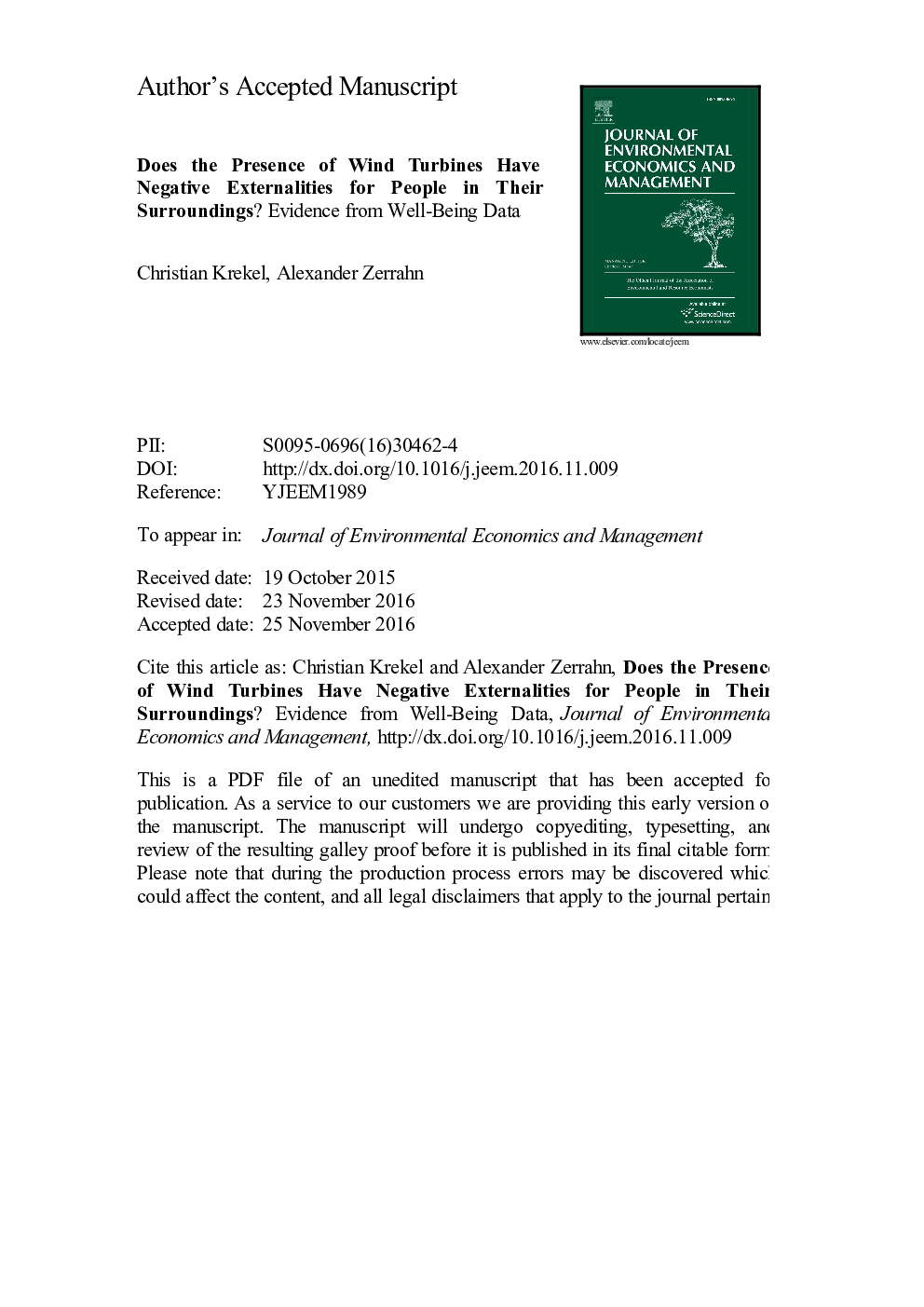| Article ID | Journal | Published Year | Pages | File Type |
|---|---|---|---|---|
| 5100434 | Journal of Environmental Economics and Management | 2017 | 78 Pages |
Abstract
Throughout the world, governments foster the deployment of wind power to mitigate negative externalities of conventional electricity generation, notably CO2 emissions. Wind turbines, however, are not free of externalities themselves, particularly interference with landscape aesthetics. We quantify these negative externalities using the life satisfaction approach. To this end, we combine household data from the German Socio-Economic Panel Study (SOEP) with a novel panel dataset on over 20,000 installations. Based on geographical coordinates and construction dates, we establish causality in a difference-in-differences design. Matching techniques drawing on exogenous weather data and geographical locations of residence ensure common trend behaviour. We show that the construction of wind turbines close to households exerts significant negative external effects on residential well-being, although they seem both spatially and temporally limited, being restricted to about 4000Â m around households and decaying after five years at the latest. Robustness checks, including view shed analyses based on digital terrain models and placebo regressions, confirm our results.
Keywords
Related Topics
Social Sciences and Humanities
Economics, Econometrics and Finance
Economics and Econometrics
Authors
Christian Krekel, Alexander Zerrahn,
